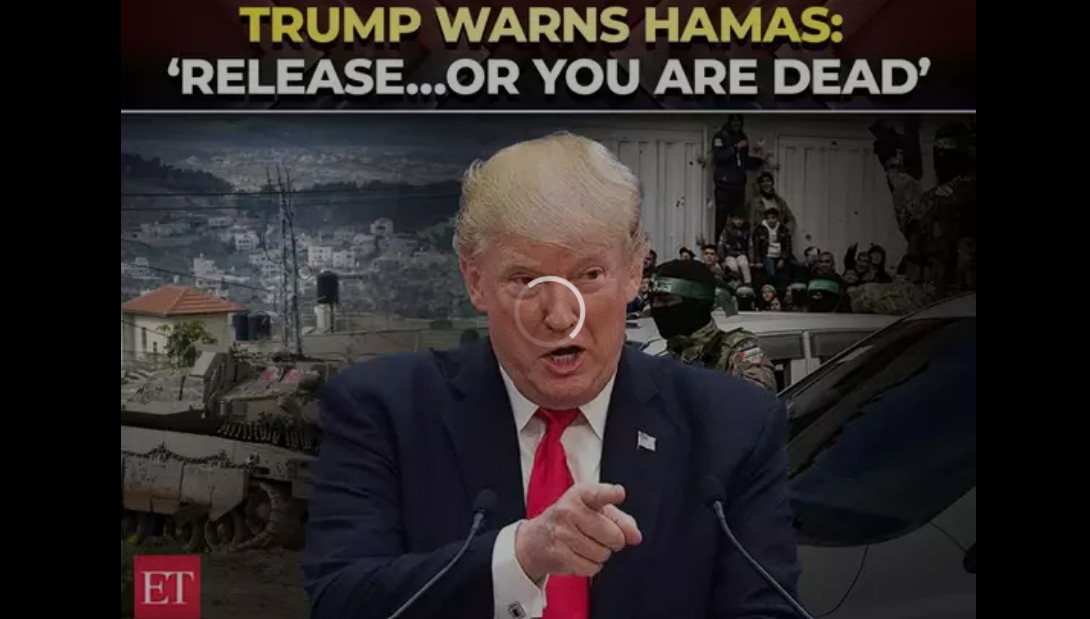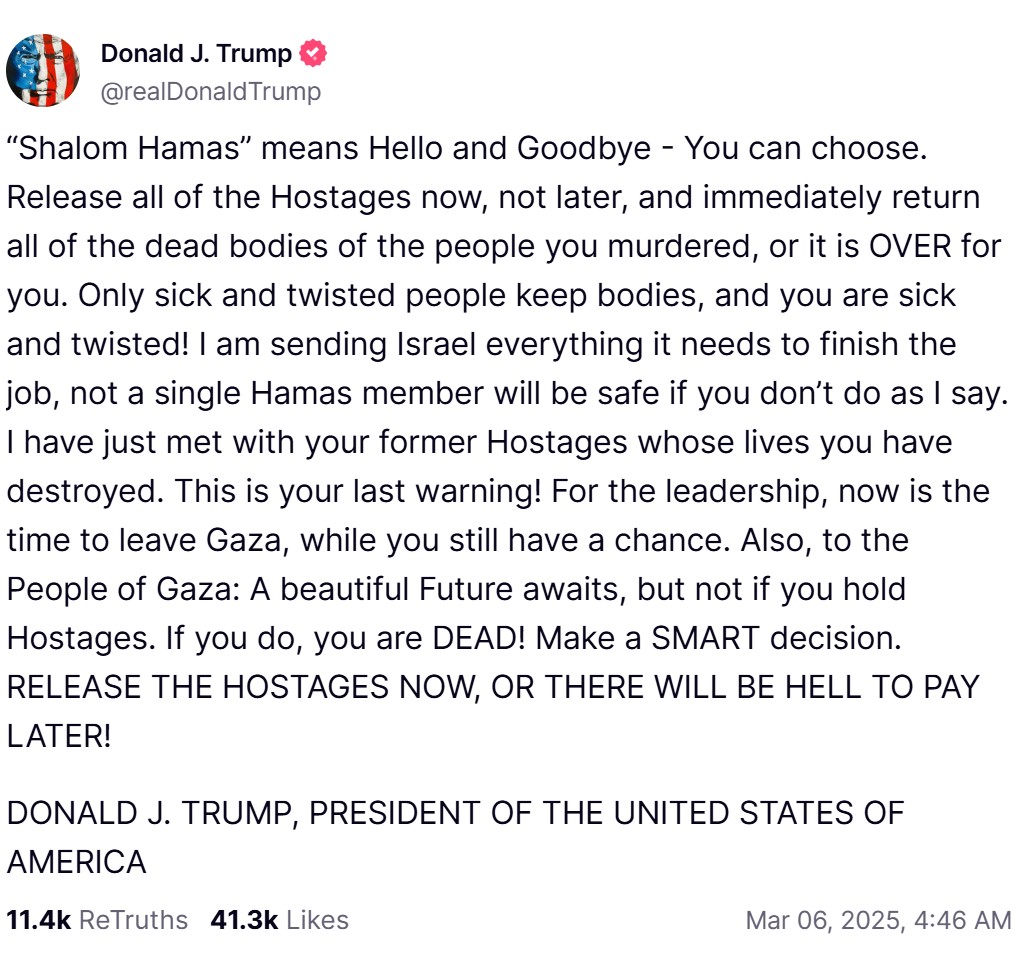With his right hand not knowing what his left hand is doing, Trump plays with fire
Credit: PGurus
By James M.
Dorsey
Substack columns like The Turbulent World are essential
reading in a world of sharply diminished coverage of international affairs by
mainstream media. The Turbulent World offers fact-based, in-depth, and
hard-hitting reporting and analysis of the Middle East and the Muslim world as
global power shifts and the region’s relationship with Asia emerges as a pillar
of a new world order.
Paid subscribers of The Turbulent World gain access to
the column’s extensive archive, exclusive posts, and polling.
They can leave comments, join debates, and know they are supporting independent
writing, reporting, and analysis that lets the chips fall where they fall.
The Turbulent World can only sustain and expand its
independent coverage free of advertisements and clickbait with the support of
its readers.
So, please consider pledging your support by clicking here.
To listen to the podcast or watch the video, click here.
The Turbulent World takes its mission of empowering
and giving the members of the public the tools to form their own opinions.
Please get in touch if you can’t at this moment
afford a fully paid subscription. We’ll find a way to accommodate you to ensure
that no one is left behind.
US President
Donald J. Trump may be a classic case of the left hand not knowing what the
right hand is doing.
Mr. Trump’s
dealings this week with the Palestinians tell the story.
White House
spokesperson Karoline Leavitt
No stranger
to breaking taboos, Mr. Trump instructed his White House spokesperson, Karoline
Leavitt, to confirm that the administration was talking to Hamas directly about the release of hostages and a
potential end to the Gaza war.
Mr. Trump
accompanied the disclosure with a seemingly genocidal threat to Gaza’s 2.3 million inhabitants if
Hamas refused to let the hostages go.
Mr. Trump’s
authorisation of the direct talks in Qatar breaks with the US policy not to
talk to entities it has designated terrorists. It also legitimises Qatar’s long-standing role as a
backchannel at the
request of the United States and with Israeli acquiescence.
All previous
US Gaza war-related exchanges with Hamas were indirect through Qatar and Egypt.
On one level,
direct talks with Hamas make perfect sense. They can help ensure that nothing
is lost in translation and enable parties to read each other better.
Five dual
national American Israeli nationals among Hamas’ captives.
Of the five Israeli
Americans among the 59 hostages still held by Hamas after multiple prisoner
exchanges, only one, 21-year-old Edan Alexander, is believed to be still alive.
The timing
of the talks enhances their significance.
Hamas will
likely see the talks as de facto US recognition that it remains a force on the
ground in Gaza that Israel has failed to destroy in 15 months of relentless
pounding of the Strip, even if that was not Mr. Trump’s intention.
That could
complicate efforts by the president’s Middle East envoy, Steve Witkoff, to
salvage the Gaza ceasefire when he travels to the region in the coming days.
The
ceasefire is teetering on the brink of collapse because of Israeli Prime
Minister Binyamin Netanyahu’s refusal to negotiate a second phase as mandated
by the ceasefire agreement.
Mr. Netanyahu
refuses a second phase because it would involve ending the war, withdrawing all
Israeli forces from Gaza, and installing a Palestinian administration of the
Strip without having destroyed Hamas or removing the group from the territory.
Mr Netanyahu
fears that those terms would reinforce Palestinian claims to the territory as
part of a future Palestinian state.
Yet, counterintuitively,
that may be what Mr. Trump has done by engaging with Hamas after 17 months of largely
failed on-and-off ceasefire negotiations following the brief halt of
hostilities in November 2023 in which Qatar and Egypt served as go-betweens.
Mr.
Netanyahu fears that the administration’s engagement legitimises Hamas and will
strengthen its insistence on sticking to the ceasefire agreement’s provision
for second-phase negotiations that should have started in February rather than
an extension of the first phase as demanded by Israel.
Mr. Trump
may hope that his threat, issued hours after meeting hostages released by Hamas in earlier prisoner exchanges, would
calm Israeli fears and deprive Hamas of any illusion that direct talks
constitute a softening of his attitude toward the group.
The threat
reiterated the president’s longstanding insistence that Hamas leave or be
forcibly removed from Gaza.
“For the
leadership, now is the time to leave Gaza while you still have a chance,” Mr.
Trump said on his social media platform, Truth Social, echoing Mr. Netanyahu’s
demand.
Rather than
cow Hamas into submission, Mr. Trump’s threat, coupled with the unprecedented
direct talks, is likely to reinforce Hamas’ resolve, anchored in its survival
of Israel’s brutal attempt to destroy it.
Responding
to Mr. Trump’s threat, Hamas spokesman Abdel-Latif Al-Qanoua insisted,
"The best track to release the remaining
Israeli prisoners is
by the occupation going into the second phase and compelling it to adhere to
the agreement signed under the sponsorship of mediators."
The
administration’s engagement will also reinforce Hamas’ rejection of demands by
Israel and some Arab states that it disarms as part of an end to the war rather
than once the Palestinians and Israel have agreed on a resolution of their conflict.
Hamas
believes that its armed struggle, including the hostages kidnapped during the
group’s October 7, 2023, attack on Israel that killed some 1,200 people, mostly
civilians, and sparked the Gaza war, is what brought the Trump administration
to the negotiating table.
In that
sense, Hamas will likely prove to be a different kettle of fish compared to
Ukrainian President Volodymyr Zelensky, who has gone out of his way to repair
relations after last
week’s bruising Oval Office encounter with Mr. Trump and Vice President J.D.
Vance.
Unlike Mr.
Zelensky, who enjoyed massive US support in the first three years of the
Ukraine war, Hamas is used to bombastic threats, even if Mr. Trump’s latest
social media posting constitutes the first time a US president embraces Israeli
and Hamas concepts that violate international law and universally accepted
moral norms.
These
concepts involve the principle of collective punishment and the designation of
civilians as legitimate targets.
Israeli and
Hamas officials have both argued that there are no innocent others, whether
Israelis or Palestinians. Israeli officials have sought to justify collective punishment by
holding Gaza’s population rather than just the militants responsible for the
October 7 attack.
Similarly,
Hamas has justified random attacks against Israelis on the grounds that all
Jewish Israelis are illegitimate settlers.
Israelis and
Palestinians falsely hope that collective punishment that inflicts pain will
spark uprisings against the others’ leaders while dehumanisation will make the
killing and abuse of civilians, including women and children, palatable.
Rather than
cow Hamas into submission, Mr. Trump’s threat, coupled with the unprecedented
direct talks, is likely to reinforce Hamas’ resolve, anchored in its survival
of Israel’s brutal attempt to destroy it.
Responding
to Mr. Trump’s threat, Hamas spokesman Abdel-Latif Al-Qanoua insisted,
"The best track to release the remaining
Israeli prisoners is
by the occupation going into the second phase and compelling it to adhere to
the agreement signed under the sponsorship of mediators."
The
administration’s engagement will also reinforce Hamas’ rejection of demands by
Israel and some Arab states that it disarms as part of an end to the war rather
than once the Palestinians and Israel have agreed on a resolution of their conflict.
Hamas
believes that its armed struggle, including the hostages kidnapped during the
group’s October 7, 2023, attack on Israel that killed some 1,200 people, mostly
civilians, and sparked the Gaza war, is what brought the Trump administration
to the negotiating table.
In that
sense, Hamas will likely prove to be a different kettle of fish compared to
Ukrainian President Volodymyr Zelensky, who has gone out of his way to repair
relations after last
week’s bruising Oval Office encounter with Mr. Trump and Vice President J.D.
Vance.
Unlike Mr.
Zelensky, who enjoyed massive US support in the first three years of the
Ukraine war, Hamas is used to bombastic threats, even if Mr. Trump’s latest
social media posting constitutes the first time a US president embraces Israeli
and Hamas concepts that violate international law and universally accepted
moral norms.
These
concepts involve the principle of collective punishment and the designation of
civilians as legitimate targets.
Israeli and
Hamas officials have both argued that there are no innocent others, whether
Israelis or Palestinians. Israeli officials have sought to justify collective punishment by
holding Gaza’s population rather than just the militants responsible for the
October 7 attack.
Similarly,
Hamas has justified random attacks against Israelis on the grounds that all
Jewish Israelis are illegitimate settlers.
Israelis and
Palestinians falsely hope that collective punishment that inflicts pain will
spark uprisings against the others’ leaders while dehumanisation will make the
killing and abuse of civilians, including women and children, palatable.
Mr. Trump’s Truth
Social posting echoed those sentiments.
Addressing
Hamas, Mr. Trump thundered, “Release all of the Hostages now, not later, and
immediately return all of the dead bodies of the people you murdered, or it is
OVER for you. Only sick and twisted people keep bodies, and you are sick and
twisted! I am sending Israel everything it needs to finish the job; not a
single Hamas member will be safe if you don’t do as I say. I have just met with
your former Hostages whose lives you have destroyed. This is your last warning!”
In the same Truth
Social posting, Mr. Trump told the Gazan population, “To the People of Gaza: A
beautiful Future awaits, but not if you hold Hostages. If you do, you are DEAD!
Make a SMART decision. RELEASE THE HOSTAGES NOW, OR THERE WILL BE HELL TO PAY
LATER!”
Mr. Trump’s
embrace of Israeli extremist language came hours after his Treasury Secretary, Scott
Bessent, welcomed to Washington Israeli Finance Minister Bezalel
Smotrich, an ultra-nationalist and Israeli West Bank settler who was persona
non grata during the previous Biden administration because of his calls for expulsion of Gazans
from the Strip.
“He is a
terrorist. He’s Jewish, but he’s a terrorist. He wanted to blow up cars on the
Ayalon highway, at rush hour, with gasoline. We caught him with 700 litres of
the stuff,” said Yitzhak Ilan, a former deputy director of Shin Bet, Israel’s
domestic security service, in a 2019 television interview.
Mr. Ilan
interrogated Mr Smotrich when he was detained for three weeks in 2005. Mr.
Smotrich has denied the allegation, noting that he was released and never
charged.
Dr. James M. Dorsey is an
Adjunct Senior Fellow at Nanyang Technological University’s S. Rajaratnam
School of International Studies, and the author of the syndicated column and
podcast, The Turbulent World with James M. Dorsey.









Comments
Post a Comment